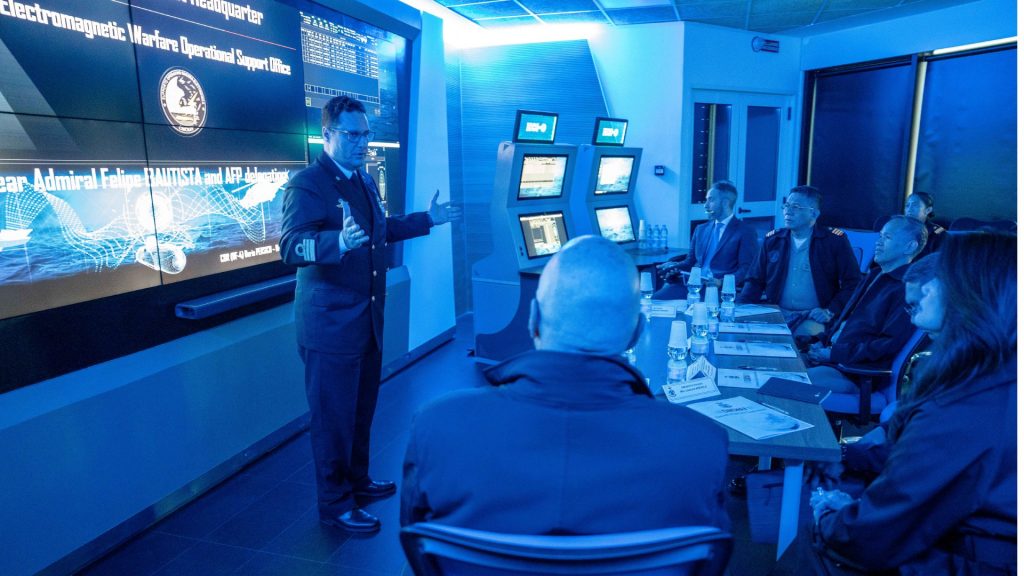Technologies related to the exploitation and defense of free access to the electromagnetic spectrum are one of the pillars of maritime defense and security
In recent years, the Russian-Ukrainian conflict and the crisis in the Middle East have rapidly transformed the landscape of contemporary threats, both conventional and asymmetrical. The increasingly widespread use of new generation missiles and unmanned systems has profoundly changed the way operations are conducted and emerging risks are addressed. In this scenario, an increasingly central role is assumed by technologies related to the exploitation and defense of free access to the electromagnetic spectrum, today considered one of the pillars of maritime defense and security.
The electromagnetic spectrum, in fact, represents a transversal environment to all operational domains and constitutes an essential enabling factor for the full expression of the capabilities of the Naval Squadron. Countering any interference is now essential to ensure effectiveness, continuity and protection of operations at sea.
In this context, the Italian Navy – through the Command in Chief of the Naval Squadron – ensures the necessary support to assets equipped with Electronic Warfare (GE) capabilities thanks to the use of the ARGO modeling & simulation laboratory, a structure dedicated to the verification and validation of the operational supports (the so-called “libraries”) of GE.
Naval units, submarines and aircraft of the Armed Forces are equipped with systems capable of detecting and identifying the surrounding electromagnetic emissions and, if threatened by RF (radio-frequency) guided missiles, of resorting to electromagnetic countermeasures integrated with the launch of chaff as a first self-protection measure. In this context, the ARGO laboratory is essential to verify that each GE library operates correctly on the systems for which it was developed, that it accurately recognizes the parameters of the programmed emissions and that the associated countermeasures are truly effective. This allows assets to expand their soft-kill self-defense capabilities, complementary to hard-kill systems such as artillery and missiles.
The Italian Navy was among the first in the world to equip itself with such capabilities, launching a pioneering project in 2018 that today represents a reference model for many allied navies and partners. It is not surprising, therefore, that the ARGO laboratory is frequently the subject of institutional visits. The latest in chronological order is that of November 18, when a delegation of the Philippine Armed Forces (AFP), accompanied by representatives of Società Elettronica S.p.A., visited CINCNAV to deepen the activities carried out in the field of Electronic Warfare. These initiatives are part of the consolidated collaboration between the Armed Forces and the national industry, contributing to the strengthening of the country system and supporting procurement and technological development activities in favor of maritime safety.

Follow us on our Telegram channel

